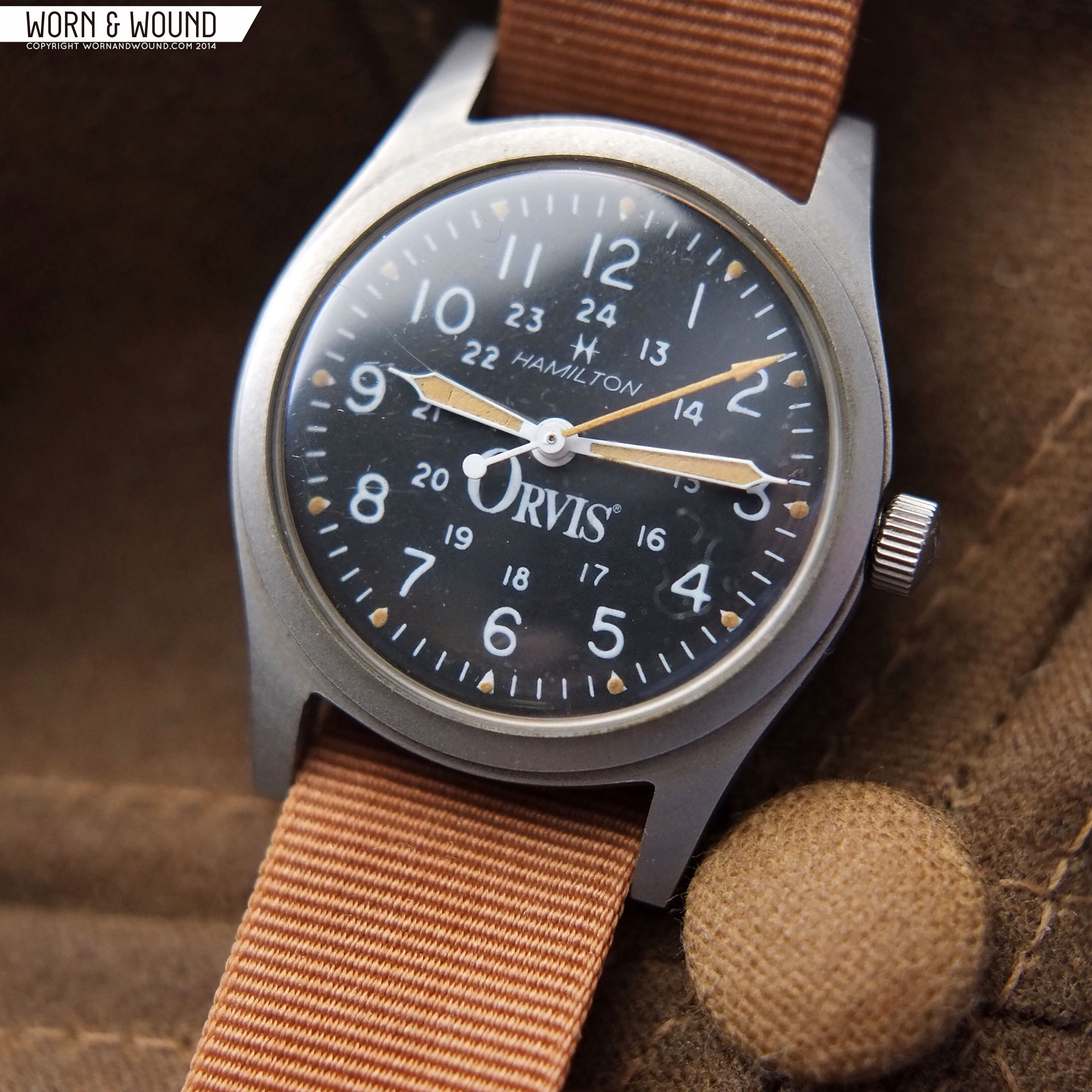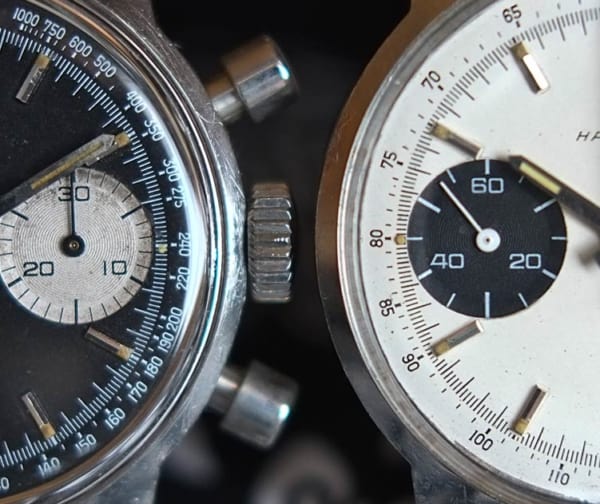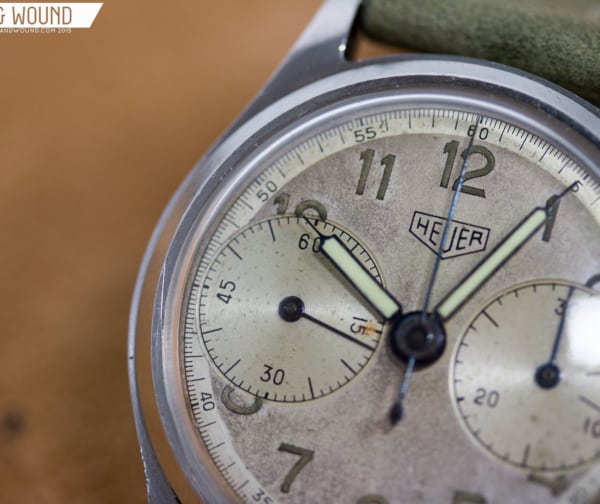What would you do if you had been producing a successful product for 20+ years for one big customer, and then that contract went away? Would you stop production? Shift your production focus elsewhere? Find a new market or customer? This is the problem Hamilton Watch Company faced in the mid-1980s. The customer was the U.S. military, and the product was the small field/navigator watch.
Hamilton had been producing small field and navigator watches for the government under the GG-W-113 and MIL-W-46374 specifications since the mid-1960s. When the government decided in the mid-1980s to stop purchasing and issuing large batches of military design specification watches from Hamilton and other manufacturers, Hamilton was left with 20+ years of manufacturing experience and equipment for these watches. Rather than scrap the gear, Hamilton decided to get creative and found a way to keep making the watches. The company negotiated contracts with a few outdoor equipment and gadget retail stores to buy essentially the same watch that Hamilton had been making for the government, marketed now towards sportsmen and other outdoorsy types. Today we’ll take a look at three such watches, made for L.L. Bean, Orvis, and Brookstone (yes, that store in the mall with the massage chairs and radio-controlled helicopters).
Hamilton worked with this trio of New England-based retailers (L.L. Bean in Maine, Orvis in Vermont, and Brookstone in New Hampshire) to create simple, functional field watches for each to sell in their stores. If you’re a fan of American military watches, these will look very familiar to you. They feature the same 33mm diameter, 40mm lug to lug matte steel cases and 17-jewel hand-wound Hamilton caliber 649 (ETA 2750) movements that Hamilton used in their later GG-W-113 navigator watches for the military. The only differences between these retailed watches and their military issued cousins are the Hamilton- and/or brand-signed dials, “H” signed crowns (though examples are seen with unsigned crowns, too), and absence of military markings on the case back.
The dials are a simple military style design with a large 12-hour track and smaller, interior 24-hour track. The hour markers and hands are lumed, and most examples you find will show nice patina. The three examples here show a wide variety of fade, from pale white on the L.L. Bean to rich pumpkin on the Orvis. The Orvis and Brookstone examples here have fixed strap bars, while the L.L. Bean has removable bars (I’ve seen other L.L. Bean examples with fixed bars), and like any good field watch, these look great on a simple NATO or RAF nylon strap. Hamilton must have found a measure of success with these, because shortly after their release, Hamilton began the Khaki line, selling the very same watch themselves with only their own branding.
These watches offer collectability similar to the military versions, though far fewer examples exist (actual numbers are hard to find). Of the three, the L.L. Bean version is seen most, followed by the Orvis, and finally the Brookstone. Keep an eye open towards online auctions and watch sales forums (especially the Military Watch Forum), where examples come up for sale every month or two. Prices depend a lot on condition, but most usually fall in the $100-300 range at auction, with the nicest examples going for more.









 Featured Videos
Featured Videos











